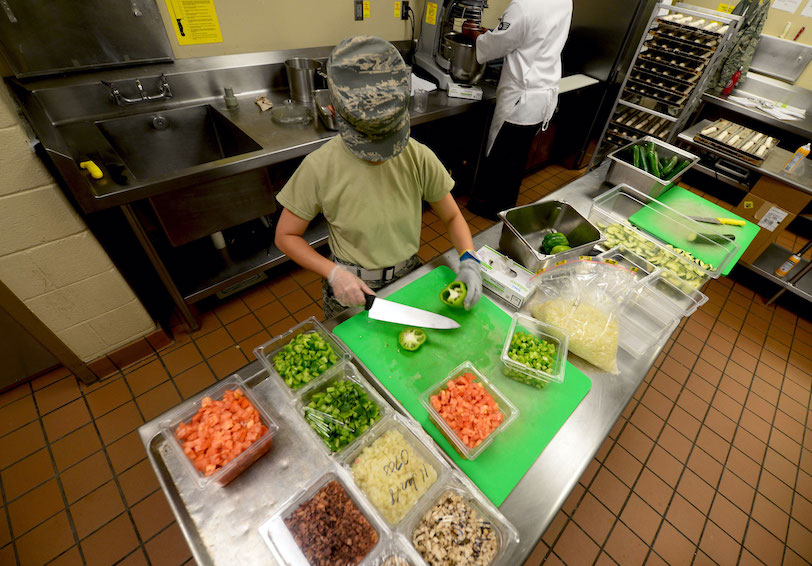Once you prepare your action plan and identify all critical tasks with realistic timelines, you’re ready to put it into motion. Try the following tips for a successful implementation.
 Start slow
Start slow
Food service operators and staff (along with customers) often best manage change slowly.
For example: If you’re working to improve your local snack bar, start with stocking healthier drink options such as water, unsweetened or very lightly sweetened coffee or tea, and 100% vegetable or fruit juice. You can find a list of Green-coded drinks in the Go for Green® ready-to-use items database. This is likely a smaller portion of the inventory compared to the large amount of food options. You can tackle bringing more nutritious snacks onto the shelves later on.
 Collaborate to find common ground
Collaborate to find common ground
Work together with food service operators and leaders to discuss goals, successes, and challenges to improve a particular venue.
For example: If your goal is to increase healthy options at a popular market, but there are concerns about how those items will sell, consider seeking input on potential new items. Target what customers are looking for by hosting a tasting panel, asking them to vote for new menu items on social media, or soliciting feedback on what they’d like to see in the market.
Consider the right timeline
Think about your action plan. What’s your intended outcome? Change might happen within a few months, a year, or even longer, depending on your goal.
 For example: Implementing a worksite policy for healthy food standards might be a long-term goal given required processes and approvals. Meanwhile (or instead), could you facilitate a healthy worksite philosophy? This more general set of beliefs to describe a healthful, supportive worksite environment might be more realistic to implement.
For example: Implementing a worksite policy for healthy food standards might be a long-term goal given required processes and approvals. Meanwhile (or instead), could you facilitate a healthy worksite philosophy? This more general set of beliefs to describe a healthful, supportive worksite environment might be more realistic to implement.
Look for creative solutions
Rarely do plans go smoothly without pauses, stops, or challenges. Have a backup plan in place to overcome potential issues. When you’re faced with an unexpected challenge, work with your team, stakeholders, and leadership to creatively problem-solve.
For example: Your team plans to add digital screens to the dining facility or galley to promote healthier menu items, provide nutrition education, and display nutrition labels. However, the digital screens are on back order. Consider temporary or complementary solutions: market and promote dining facility menu items and highlight high-performance options on social media, display printed posters and signs, or advertise on your installation’s website.
![]() Document your challenges, successes, and best practices for your team and your leadership. Gather feedback from your local team, stakeholders, and the community on the implementation process. And remember to keep these notes to refer back to when you implement future changes to your nutrition environment. Also, share your valuable experiences and insight with the military nutrition environment community by contacting CHAMP’s MNE team at mneat@usuhs.edu.
Document your challenges, successes, and best practices for your team and your leadership. Gather feedback from your local team, stakeholders, and the community on the implementation process. And remember to keep these notes to refer back to when you implement future changes to your nutrition environment. Also, share your valuable experiences and insight with the military nutrition environment community by contacting CHAMP’s MNE team at mneat@usuhs.edu.
